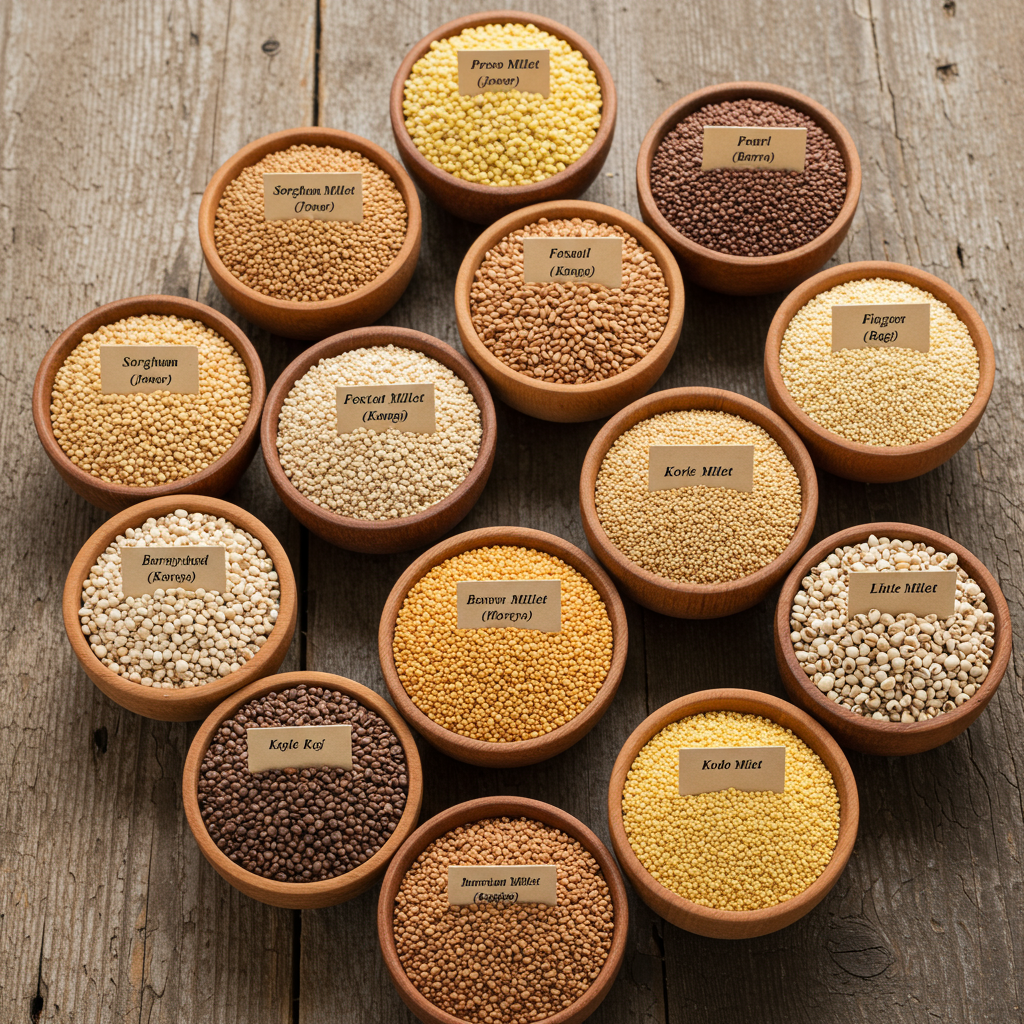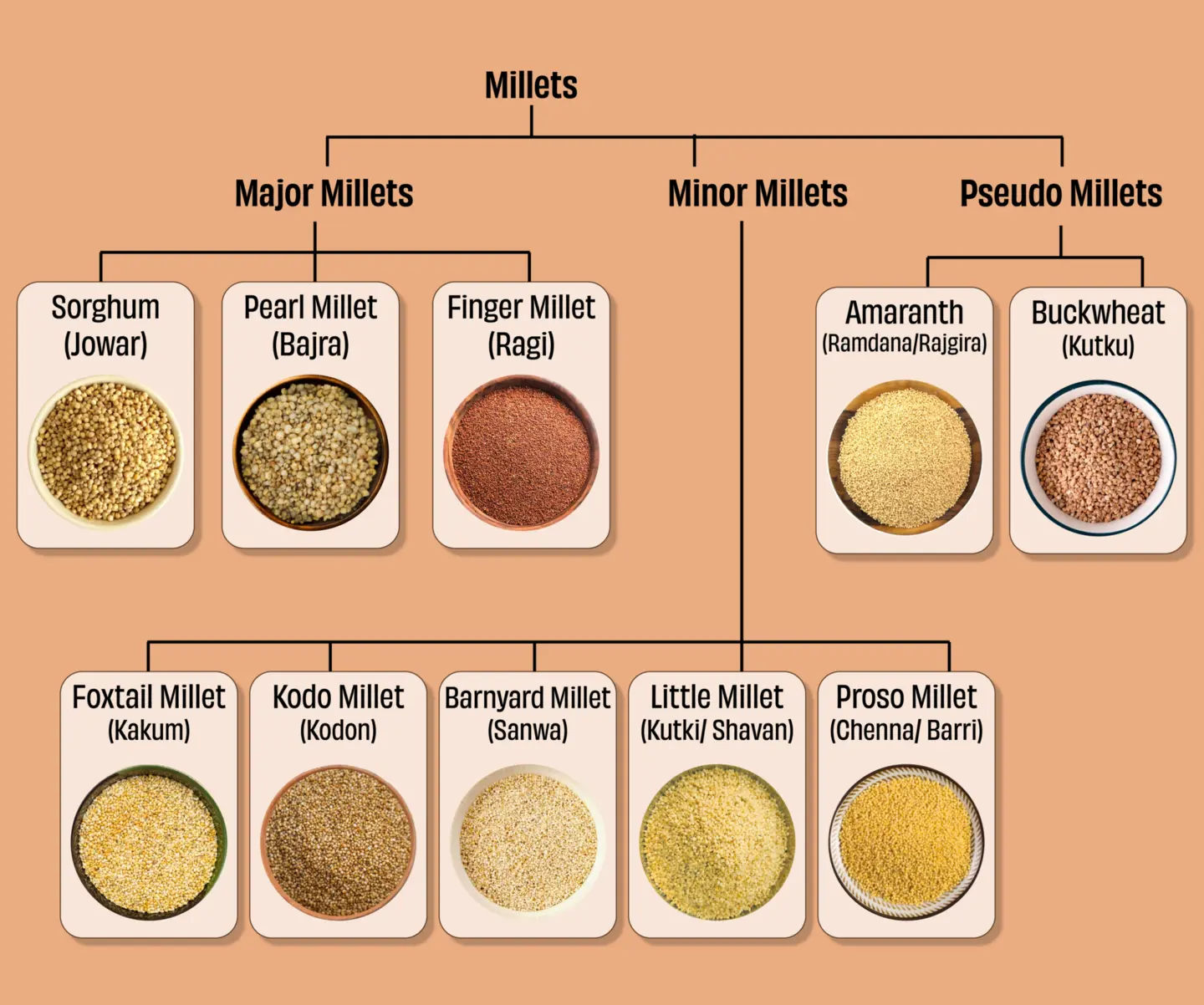The Power of Millets
Millets are a group of highly nutritious, small-grained cereals that have been a staple food for thousands of years. They are remarkably resilient, able to thrive in harsh, dry climates, and offer a powerful array of health, environmental, and economic benefits.
Types of Millets
There are several types of millets, each with its own unique characteristics and nutritional profile. Some of the most common types include:
- Sorghum Millet (Jowar)
- Proso Millet (Chena / Barri)
- Pearl Millet (Bajra)
- Foxtail Millet (Kakum / Kangni)
- Finger Millet (Ragi)
- Browntop Millet (Korle)
- Barnyard Millet (Sanwa)
- Little Millet (Moraiyo)
- Buckwheat Millet (Kuttu)
- Amaranth Millet (Rajgira)
- Kodo Millet


Why Millets are Superior to Wheat and Rice
Millets are often considered superior to more common grains like wheat and rice due to their exceptional nutritional content and health benefits. They are a true superfood that can help improve overall health, support sustainable agriculture, and provide economic opportunities for small farmers.
Health Benefits
Millets are a powerhouse of nutrients, offering significant health advantages:
- Nutrient-Rich: They are packed with essential vitamins, minerals, protein, and antioxidants. Being naturally gluten-free, they are a perfect alternative for those with celiac disease or gluten intolerance.
- Blood Sugar Control: With a low glycemic index, millets release sugar slowly into the bloodstream, helping to regulate blood glucose levels. This makes them an excellent food for managing and preventing diabetes.
- Cholesterol Reduction: The soluble fiber in millets can help lower cholesterol levels, significantly reducing the risk of heart disease.
- Mood Improvement: Millets contain tryptophan, an amino acid known to improve mood and help reduce symptoms of depression and anxiety.
Environmental and Economic Benefits
Millets are not just good for you; they are also good for the planet and local communities.
- Climate-Resilient: Millets are naturally drought-resistant and tolerant to pests and diseases, making them a reliable crop in adverse weather conditions.
- Sustainable: As a sustainable food source, millets can help address food security challenges in a world facing climate change and a growing population.
- Economic Livelihood: Cultivating millets provides a crucial source of livelihood for small-scale farmers, supporting local economies.
Millets vs. Rice: A Nutritional Comparison
Compared to rice, millets are a far more beneficial grain for maintaining long-term health. The core reason lies in how they are digested and absorbed by the body. Millets release sugar into the blood slowly, maintaining stable glucose levels, while rice causes a rapid spike, which can lead to increased fat and cholesterol.
Millets are also incredibly rich in fiber (8-12.5%), which is significantly higher than the minimal fiber found in rice (0.5%). This high fiber content keeps you feeling full longer, preventing unhealthy snacking and helping with weight management.
They are also nutritionally superior, providing higher levels of essential minerals, vitamins, and amino acids. Regular consumption of millets is known to purify blood, normalize hormones, and boost immunity, which is crucial for preventing a wide range of modern-day lifestyle ailments.
Key Takeaways
- Millets are a small-grained, climate-resilient cereal.
- They are a healthier alternative to rice and wheat due to high fiber and low glycemic index.
- Their benefits include better blood sugar control, cholesterol reduction, and improved mood.
- Millets are also beneficial for the environment and provide sustainable livelihoods.